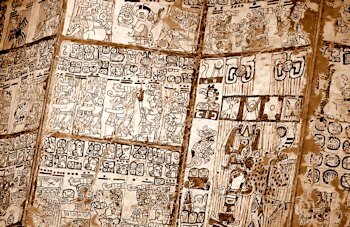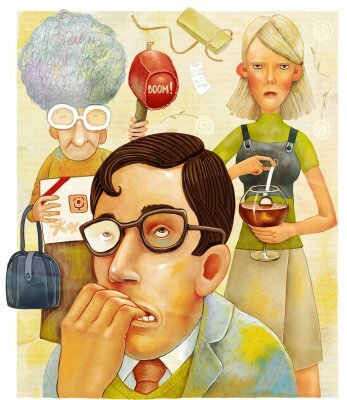Characteristics of Pre-Columbian Literature
Literature / / July 04, 2021
Pre-Columbian literature deals with the cultural, religious and hieroglyphic collections of the cultures of pre-Columbian America, where they expressed their feelings, stories, mythology and religion.
It should be clarified that between the characteristics of pre-Columbian literature, will highlight the different exponents or points of origin of the information, but in this sense a clarification must be made in relation to the Popol Vuh and to the books of Chilan Balam, than by efforts of the Catholic missionaries arrived with the conquerors, who in their eagerness to avoid the total destruction of this culture, considered harmful by some Spaniards.
This implies an intervention and compilation by the missionaries, losing to a certain extent the indigenous authenticity, but without losing the representation of the pre-Columbian indigenous culture as it is based on customs and information pre-Columbian.
Characteristics of pre-Columbian literature:
Sources.- We can consider as sources of pre-Columbian literature among others:
- Codices
- Traditional stories
- Books
- Archaeological finds
- Uses and customs etc.
Sources are all the origins and processes that have allowed literature to be maintained or rebuilt pre-Columbian throughout America, so we can list as culturally speaking the following:
1.- Aztec culture.- Codex Borgia and Borbonicus, Codex Xolotl, Poems attributed to Nezahualcoyotl, the stone of the sun.
Codex borgia (Codex Yoalli Ehcatl) .- This is made of tanned leather and expresses a type of indigenous writing, and was renamed Yoalli Ehcatl, and even today it is doubted that it is of Nahuatl origin.
It talks about the symbols of divination, reading mostly from right to left, although this part is read from left to right.
Xolotl.- This is a codex that speaks of a god who had many personifications, was capable of transit in the underworld and it is known that he was a god who fled from death.
Nezahualcóyotl (hungry coyote).- This was a ruler and poet who is credited with a series of well-known poems. He was born and died before the arrival of the Spanish.
Sun stone (Aztec Calendar) .- This is a safeguard in which the Aztec cosmogonic theories were expressed, and in which the precision and languages reached by the Aztecs are demonstrated.
2.- Mayan culture.- In this culture emerged what they called the prohibited texts. In this culture the following sources can be mentioned:
- Sololá Memorial (annals of the Cakchiqueles).- This is a document written in a language called kaqcchikel, which recounts part of the mythology, conquests and successions until the arrival of the Spanish.
- Chilam Balam.- This is a writing made by indigenous people who, with clear influence from the conquerors, gathered information that was considered to come from traditions transmitted orally, which were written but already influenced by the missionaries evangelizers.
- Popol Vuh.- This book is a compilation of narratives that express situations and phenomena that occurred in the Mayan section of the current state of Chiapas and the country from Guatemala (it is believed that one existed in Quiché), This document is said to have been written by an already educated indigenous person, but it is known that it already has influence On the part of the missionaries and priests, who left their intervention embodied, some indigenous people insist that this book is fully indigenous.
- Robinal Achi (theater-like representation)

3.- Inca Culture.- In this culture there are also data with the intervention of missionaries, which happened with “Ollantay”.
- Ollantay (Drama in Spanish, written after the s. XVI) .- It is known that this text is written with the intervention of a priest, but it is estimated that it was written based on orally transmitted popular culture and that it was adapted for the theater.
- Uska Paukar.- This text is clearly written by chroniclers and priests, but it is known to have information directly related to the Cuzco antecedents of Peru, these texts were published until century XVIII.
- Atahualpa tragedy about the end of him .- This is the story of the last Inca ruler, who was executed by the conquerors due to a complicated conspiracy about treasures and gold denied to the Spanish crown, ending up executed by club.
Culture.- This culture fully expresses the culture and many of the customs existing in the indigenous culture, which existed before, during and after the arrival of the Spaniards, fully assisted by some missionaries who, contrary to the majority of the missionaries, considered it convenient to maintain the legacy of this culture.
It shows their feelings and traditions, expressing in the vast majority a bellicose and extremely religious act, where they performed rites complicated, it also demonstrates the culture of the natives in the sciences, especially astronomical ones, since the stone of the sun expresses predictions very precise.
Numeration.- They were able to arrive at the theory of the number zero, they formulated their own ways of carrying out their accounts and they had computer systems.
Scholarship.- There were specialized schools for each type of individual, for rich people, poor people, women or men.
Poetry.- Although in indigenous culture there was no novel or other genres, poetry did exist and was highly developed, there is not much writing directly, but by oral tradition and by engraving in codices and monuments, some have been able to stand out, by various authors, among which stands out Nezahualcóyotl.

